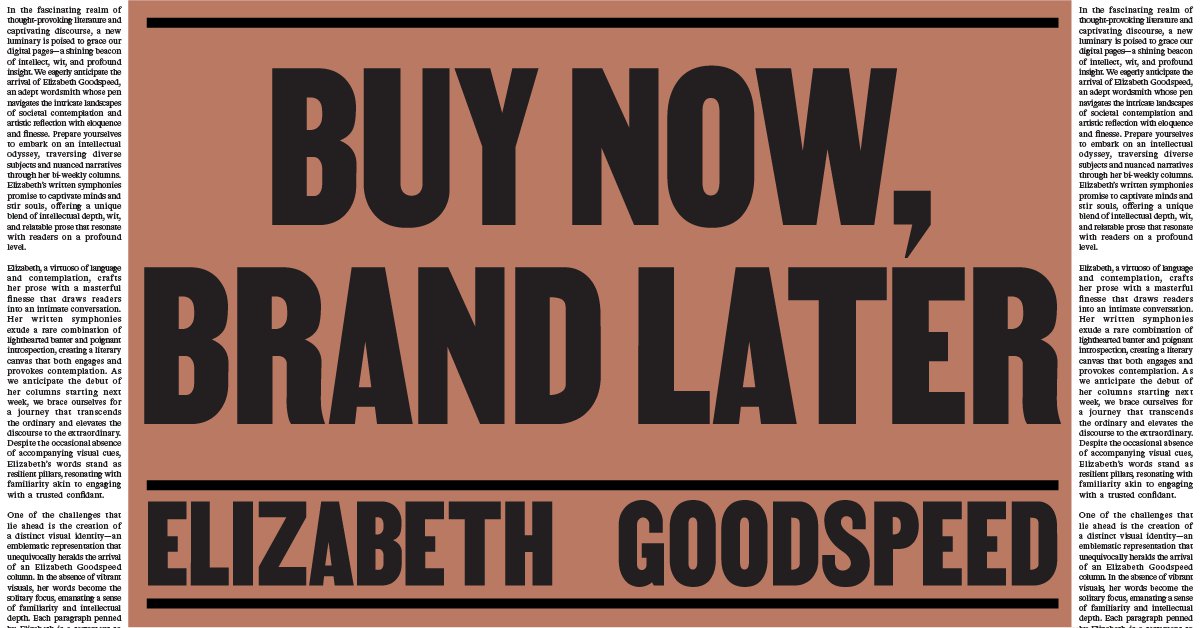The idea of a brand marketplace may feel novel, even radical, but it consolidates practices already happening informally in the industry. In 2006, long before BLT was a twinkle in Lyon & Lyon’s eyes, British ad agency Bartle Bogle Hegarty launched Zag, a brand-invention arm that developed concepts to license or sell for revenue shares. In 2013, self-titled entrepreneur and artist Ben Pieratt pushed the notion further with Hessian: a fully spec’d identity for a TBD product that included a name, URL, social accounts, logo, t-shirt designs, patterns, a website theme, app UI, icons, a brand book, and 30 hours of design support – all for $18,000. As Ben told Wired, many designers “have concepts that we know are valid and worthwhile, and not only that but we instinctually know how they should be launched, how they should look, how they should work, and who their target audience should be.” Ben later formalised this “TK Brand” model into a service called Pre-Brand (tagline: “You don’t need a brand. You need a launch”), offering pre-made identity packages ranging from $5k–30k.
Speculative branding has been part of design culture for a while, even if the price tag is fairly new; fictional brands have filled portfolios, populated design media, and shown up as props in commercials and films for at least a decade. Just as mockups help younger designers appear more experienced, made-up projects let designers show off what they could do (even if no one’s paid them to do it yet). Even bigger, more established studios benefit from the opportunity to flex an underutilised skill. “It’s the best way for us to showcase all of our services in one project,” says Ugo LaChapelle of Caserne, who created a faux hotel as one of many self-initiated projects. Designers are, after all, constantly encouraged to make personal work; if your medium is branding, it makes sense that your personal work might take the form of a brand. Besides, what identity designer amongst us hasn’t tried to repurpose an unused colour palette or logo idea for a new client? Even Louise Fili admits in her book Louise Fili: Inspiration and Process in Design that she’s re-pitched the same fork-noodle-logo concept at least seven times since 2001. For Matt and Ben Lyon, brothers and founders of Lyon & Lyon, the power of spec work was clear long before Brands Like These. They’d often gotten emails about conceptual projects they’d made for fun (especially a faux hair care brand called Fabrica, now available for £10,000 on Brands Like These) that said, “I want that. I’ll buy it off you. Where does it exist?” BLT was simply their belated answer.

